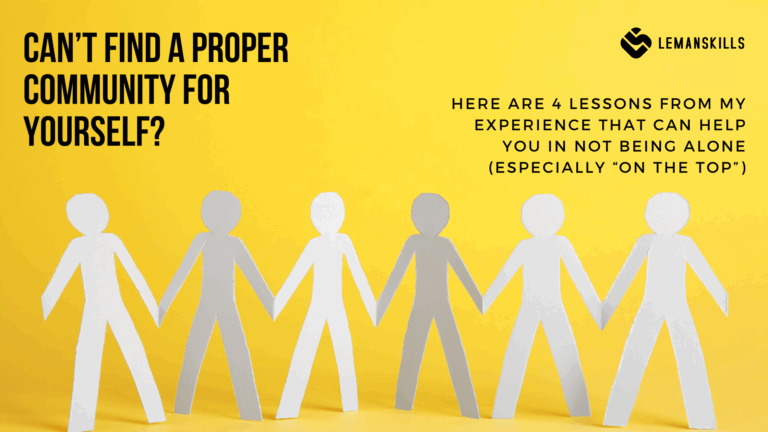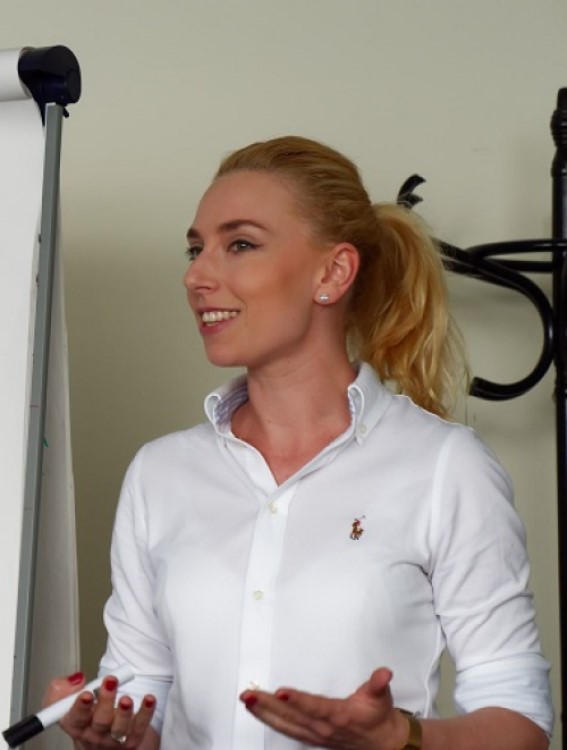
Experiencing Burnout in IT? Here’s Why
Are you feeling sick to your stomach on Sunday afternoon when you think about starting work on Monday? Or maybe you are under constant stress and pressure of not delivering everything you have on your task list? Not being up to date with everything that’s changing in the Tech world? Do you have moments of energy so low that you don’t even want to get out of bed to start working? If you said “YES” to at least one of the above, it might mean that you’re in the middle of burnout. A lack of power, energy, intrinsic motivation, and engagement to do things at work. Why is burnout a new pandemic, especially in the tech world? I see so many leaders, startup Founders and team members who are experiencing that state than I can count. That’s why I’ve decided to take a closer look at the subject and give you 2 things: The root cause analyses and some solutions that you can take and implement. So, if you are this person or you know somebody who is in the burnout zone, keep reading. Burnout Root Cause No. 1: Stretching Too Much The first root cause of burnout is staying in the stretch zone too much. In the article about OKRs, I gave you 4 zones of efficiency and growth: Bored, Comfort, Stretch, and Burnout Zone. When we are in the Comfort Zone too much, there’s no growth, and we can go into the Bored Zone. When we are in the Stretch Zone too much, we can go into the Burnout Zone. If you put yourself under too much pressure, you want to learn too much in a super short period of time, if you take on responsibilities that you’re not ready for or prepared to… You can go into burnout very easily. So, the question is: Do you push yourself too hard? Do you demand of yourself the things that you’re not so demanding about when it comes to others? And don’t get me wrong here. I’m a demanding person. I push myself every single day, but it costs a lot. And I’ve learned it the hard way because I pushed myself and then pushed myself and then I got sick. So, it was the wakeup call for me: To take care of my health and get my priorities straight. Do I still have moments of exhaustion? Sure, I have. But I also know that the best way is to move from Comfort to Stretch Zone in balance to prevent burnout. Diluted focus gives you diluted results. Always. The burnout among IT professionals, leaders, C-level people, Founders, and Co-founders in the startup setup is well-documented and a growing issue. So, it’s not like it wasn’t visible in the past, and it appeared like today. It’s growing, and it’s a lot of research, a lot of studies about this issue. Burnout Root Cause No. 2: Excessive Workload Another root cause is excessive workload and working long hours. Of course. Especially when you are a Founder or Co-founder, when you are building your business from scratch. But it should be a phase, not a day-to-day reality until the rest of your life. So, we have heavy workloads and frequent overtime. When you work as a highly responsible person (the higher position in the org chart, the more responsibilities you have), there’s a pattern of an expectation, mostly unspoken, to be constantly available. It’s also attached to the SME level; it seems like everybody experiences it. And we have numbers to show us how much it cost. The research of the ISACA Tech Workplace and Culture survey from March 2025 shows that 54 % of IT professionals have heavy workloads, and 43 % point to long hours as the primary drivers of burnout. We have more. The same research is talking about tight deadlines, 41% respondents say that they lack resources, 41 % underlines unsupportive management, also 41% the lack of appreciation. Burnout Root Cause No. 3: Constant High Pressure Another bucket of the burnout root causes in tech is high pressure work environment. When you work in a startup environment, it is super high-pressure because we are going for the next round of investment, or maybe we have a VC on board, and they require results because they invested and they want to get the money back. There’s always going to be pressure when it comes to money, startup setup or the corporate world. But we also have a high pressure of an expectation for innovation and rapid delivery. Because the world is shifting, and technology is changing so fast that it’s like being on a mission all the time. Tight deadlines, high expectations. Constant misery of the business because they’re not happy with the deadlines, with the functionalities that we deliver. Burnout Root Cause No. 4: Continuous Learning Demand In connection with that, the next part is the rapid technological change in continuous learning demand. So, it adds up to the pressure as well, because we need to continually update skills, especially Subject Matter Experts, engineers, and leaders. We like it or not, we cannot know everything. And I know that a lot of Thinkers are not on board with me on that one, but it is impossible to be up to date with everything. But a lot of professionals are overwhelmed by the pressure to learn new tools and practices while managing the existing responsibilities, tasks, projects, and initiatives, because it is like having two jobs. So, one, my day job is to keep the machine running, and the next job, the second part of it, is to keep up. And it can be a cause of burnout because it’s impossible. After all, it’s a never-ending story. It’s impossible to know everything. Burnout Root Cause No. 5: Work-Life Imbalance The next one is work-life imbalance and blurred boundaries. So, it is a shift, and I think it started



